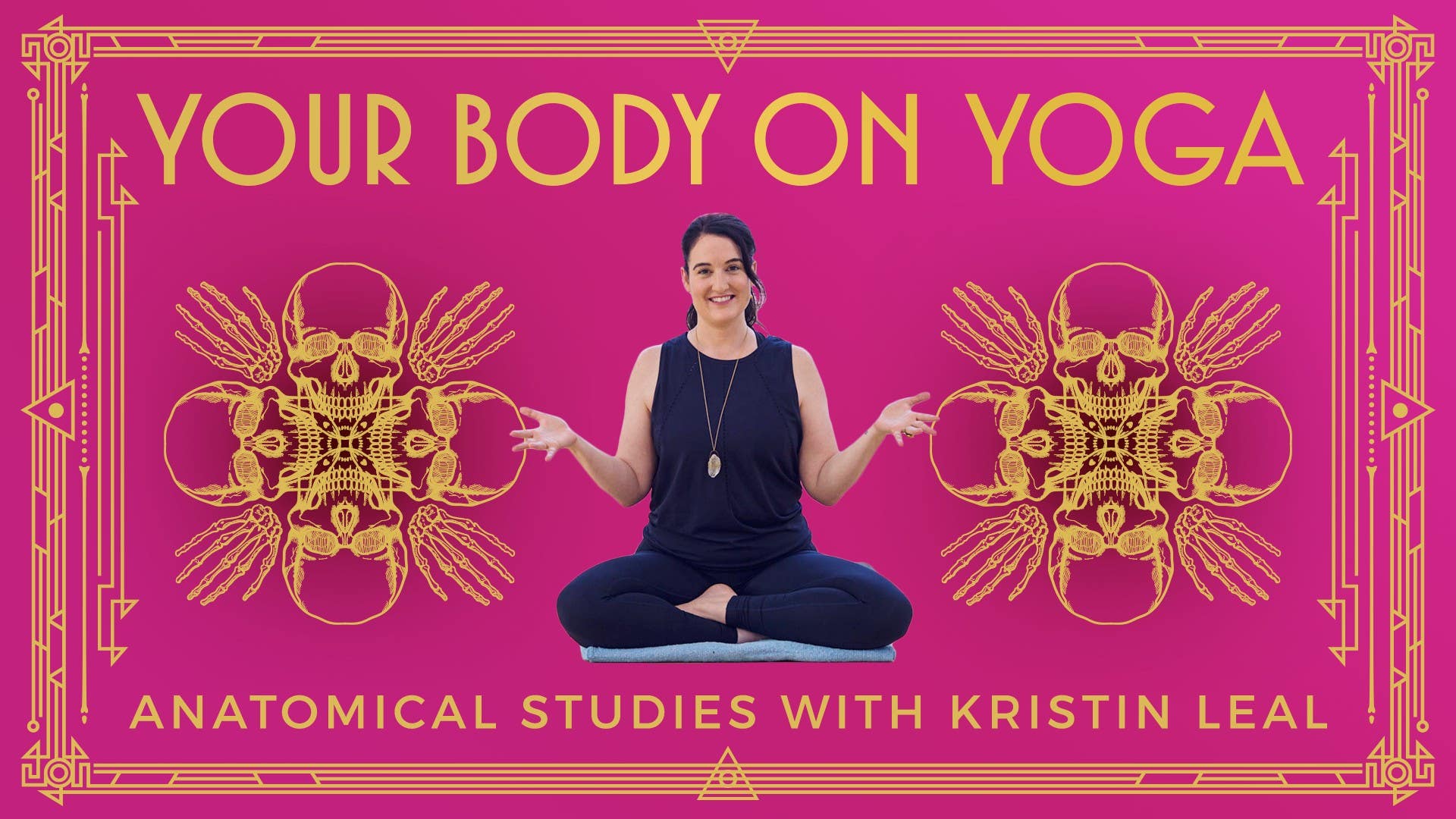Description
About This Video
Transcript
Read Full Transcript
A great thing is happening these days in that a lot of the medical community, a lot of doctors and physical therapists, are almost prescribing yoga for their patients, and the patient might come in with a lower back problem or a knee problem, a shoulder problem, and Dr. Sisko do yoga. Yoga will help. And that's awesome because I think more people, it's available in more communities, and the word is getting out that these postures hold a little bit of magic for us. The issue is not all asana, not all physical portion of the practice is therapeutic. Some is what we call non-anatomical movement. Your body doesn't do it well. There are even some flyers I've seen for therapeutic yoga with a lovely woman in a bikini doing a chin stand on a rock overlooking the ocean, and it's gorgeous. And if, you know, bless her. And I wouldn't call it therapeutic. I'd call it pretty dangerous on all counts. So we have to be clear what poses are of therapeutic value, and that's very individual, and what poses are, frankly, you know, terrifying. So this is hard because when a student comes in fresh from the outside to a group class and is doing a whole slew of postures, they believe in their heart because they've been told, well, it must be good for me, so I must do it. We even say things as teachers in our languaging, like, well, if you can't touch the floor, I guess you can take a block. You can modify and take a block. Well, who the heck wants to take a block? You're not making it very appealing to them. So instead of using the word modify and kind of flipping the view a little bit, it's not that we're trying to modify ourselves to fit some kind of pose. Rather, we're trying to adapt the posture to suit us, to suit our individual bodies. This is one step to how to make it more individualized, more therapeutic, and a better fit for more people. We also have to observe where these postures came from. I think a lot of times before we're told, we think all of these postures existed on a cave wall somewhere, or divined by these ancient yogis. They weren't doing flip-dog, rock star, you know, all of these poses that you see maybe in Yoga Journal or on Instagram. I don't think they were doing them. Many of them, actually, the story goes, were born from the 1980s in the aerobics era because it was, you know, fashionable to move quicker, to put on music, to rock your body. This was a fashion. And it goes back to this story of where these postures came from. A lot of them that most of us practice come from the Krishnamacharya lineage. Krishnamacharya had this, he was a guest of the king of the Raj, and he had this beautiful studio, and he really was known for, the story goes, I wasn't there, it was in the 1930s or so, that the story goes that he really wanted to teach teacher to student individualized practices, and very specific, depending on what the person, how they were digesting, how they were sleeping, what kind of body type they had, what their constitution was, and he would individualize movement, breath, mantra, meditation, yoga nidra, all these practices to suit the individual. Next door to him, the story goes, that there was a bodybuilding gym, and bodybuilding started to get all the craze in the 1930s, 40s, and there was a bodybuilding gym that opened up with calisthenics and those guys in handlebar mustaches and the onesies, and doing all of this kind of calisthenic jumping around and weights and all this kind of stuff, and he was losing students, because that was really appealing and of the rage, and so to make it more appealing, he started adding more jumping around and strength kind of movements, it was also around the very influenced by the British army, who were trying to colonize and their calisthenics, their routine that they would do in the mornings, and so they added all of this different flavor to suit the needs of the individuals. He, Krishnamacharya, had a few very famous students that you might have heard of, he had a student, BKS Iyengar, who was kind of a sickly kid, he had a lot of issues in his physical body, so when Krishnamacharya taught Mr. Iyengar, he used a lot of props in very specific ways, the blanket folded exactly like this with this strap, and lay over this gymnastics horse, and do the posture this way for this many breaths, and it really suited Mr. Iyengar, and it inspired him to systemize that form of yoga, and teach it, and pass it on to his students. He had another student named Patabi Joyce, Patabi Joyce was a teenager, and only studied for him, the story goes, for a little bit, and he couldn't, Krishnamacharya couldn't make one of these expositions, these expos, a way of selling this yoga practice for more students to come, he would take these kind of young boys, very flexible, very gymnastic boys, and kind of send them out and say, look what they can do, and come, come learn this yoga thing, it was like an advertisement, an enticement, so he couldn't make it one of these days to his expo, and so he sent Patabi Joyce out, and Patabi Joyce was told, do this sequence exactly, hold everything for this amount of breaths, and don't deviate from the plan, and Patabi Joyce, that really worked for him, he began to codify, and systemize, and lock it down, and bring it out into his, later on, into his lineage, his students.
He also, Krishnamacharya had his son Desagachar, and Desagachar would follow him around when he would teach privately, teacher to student, and learned how to ask these questions, and make the practice very individualized for the student using breath, and mantra, and very little vignettes, little movements, and so he then, learning from his father, took that, systemized with care, brought it out to his students, so I think the practice is meant to evolve, depending on who we are, if we're teachers, who our students are, we can, it doesn't need to be locked down into this set of postures, or this particular box, right, we're really free to move outside of that box, to make the practice suitable for each individual. We also need to start looking at what seems to come up a lot in our practice, the advertisement of this practice is all about, more is better, right, if you can't touch the floor, take a block, which means you're really trying to get to the floor, but once you get to the floor, once you can touch your toes, then wrap your hands around your toes, once you can take your hands around the toes, take two blocks, once you can get two blocks, take three blocks, once you can get three blocks, have a teacher come step on you, because more must be better, more flexibility must be better, that's the kind of advertising that gets put out into the world, that yoga is about flexibility, about moving past limitations in the body, and it must be flexible to do yoga, what I will say to you, more flexibility, more problems, more muscular skeletal injury, because a muscle doesn't work so much like a rubber band, we're going to look at muscles in its own unique episode, but the muscles, they have a little bit of give, but once we move them past where they'd like to be, they actually start to hang on to more attention, they feel insecure, they're like what the heck is happening, where are you going, and in life they hold on to more attention, which tricks you into thinking, well I need to stretch, I feel so tight, I need to do more, more, more, more, more, right, so it benefits us to have, to strike a better balance, to start to observe, am I just trying to go deeper, deeper, deeper, deeper, because it mimics the same thing we have in life that well once I get this promotion, then I feel okay, once I get this mate, then I feel okay, well once I get this amount of money in my bank account, then I'll feel okay, and there's no stop, there's no stop, right, there's no resolution, there's no presence in where you are, so can we start to challenge ourselves, where these postures came from, what is their purpose, how are they to be performed, and start to let that illuminate our practice and our teaching.
Your Body on Yoga: Introduction to Anatomy
Comments
I just have to thank you. Though my flexibility is improving, my body just doesn't like to stretch as far as my teachers are asking. I frequently have to "take the block" and I always feel so discouraged or frustrated with myself! Thank you for putting a positive spin on it

I really enjoy the way you combine various facets of yoga (history, anatomy, philosophy, meditation, breath/pranayama/chanting) and ask your viewers question and think about certain practices for themselves.
Thank you for sharing this :)
You need to be a subscriber to post a comment.
Please Log In or Create an Account to start your free trial.














